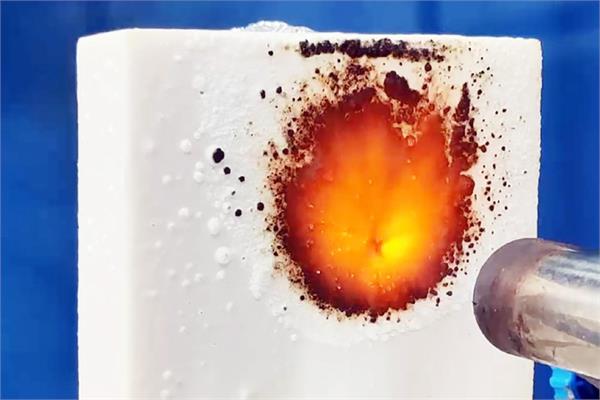
A team from the University of Southern Queensland, led by Professor Pingan Song, has developed a lava-like non-toxic, fire extinguishing coating.
The researchers from the University of Southern Queensland (Australia) have announced the development of a new non-toxic fire extinguishing coating that could prevent buildings from being engulfed in flames.
The study, led by the chemical engineer Pingan Song, was inspired by lava, one of the hottest substances that could be found on the surface of Earth. As lava, the new hybrid coating would in fact melt and then gradually form a flowing but non-combustible ceramic layer when exposed to extreme heat.
“Melton lava is like a viscous flowing liquid but non-flammable. Once cooled, it solidifies to become a ceramic layer that does not support fire. Inspired by this interesting phenomenon, we designed a fire retardant coating that can create a non-combustible ceramic layer which can offer fire protections for the underlying substrates, just like a fire shield,” stated professor Pingan Song.
The flame retardant is composed by a mixture of several metal oxide powders (including oxides of aluminium, silicon, calcium and sodium) that starts to melt at around 350°C (below the temperature of most flames), forming a glasslike sheet. The researchers added then tiny flakes of boron nitride, which flow easily and help fill any spaces between the metal oxides as the glass forms. Finally, they added a fire-retardant polymer that acts as a binder to glue the rest of the mixture.
Spraying this new coating on building materials – such as thermal insulation foam, timber and steel structures – during the construction process could prevent disasters like the 2017 Grenfell Tower blaze in London, where 72 people lost their lives. Besides building, the lava-like flame retardant can be applied also in other different settings, for example wooden furniture, mining, tunnels and transportations.
“Polymer foams were identified as the main cause of recent catastrophic disasters, particularly the Grenfell Tower fire. Solid wood materials, also widely used in buildings but extremely combustible, can also trigger fires, like the Notre-Dame de Paris blaze in 2019. Our fire retardant coating produces a very robust and thermally stable ceramic layer, compared to existing coatings, which usually produce a protective layer that is fragile and degrades at high temperatures,” continued Song.
The fire-retardant coating still needs to undergo further testing and refinement before its launch on the market, that is expected to take place within the next three years.
The research, which was financially supported by an Australian Research Council Future Fellowship, was published in the journal Matter.